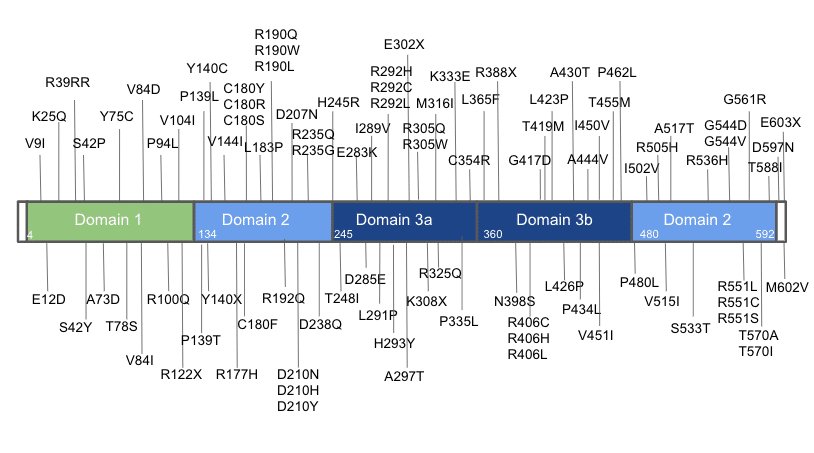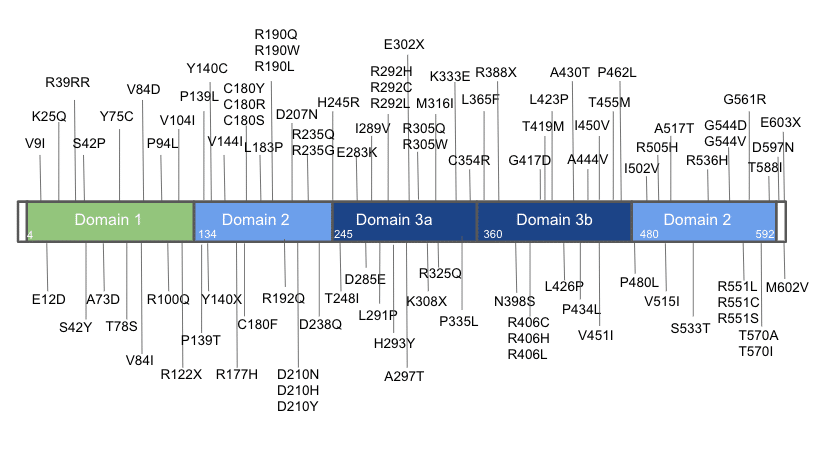How many mutations can you possibly have with one gene? Let’s see what CRISPR can deliver.
We created over 90 point mutations in the STXBP1 gene via CRISPR! A map of these point mutations can be seen below. Clinical variants were selected from the ClinVar database, literature, the Gnomad database, clinical researchers, and the STXBP1 foundation.
 We received a Phase 1 SBIR to characterize point mutations in the STXBP1 gene, which is associated with epilepsy in humans. The worm homolog of STXBP1, unc-18, causes uncoordination and near-complete lack of pharyngeal pumping when knocked out. The functionality is restored by replacing the worm gene with the coding sequence for human STXBP1. Learn more about our C. elegans point mutation services and Neurodegenerative Disease Models.
We received a Phase 1 SBIR to characterize point mutations in the STXBP1 gene, which is associated with epilepsy in humans. The worm homolog of STXBP1, unc-18, causes uncoordination and near-complete lack of pharyngeal pumping when knocked out. The functionality is restored by replacing the worm gene with the coding sequence for human STXBP1. Learn more about our C. elegans point mutation services and Neurodegenerative Disease Models.
Accelerate your research with our top-notch gene editing services – Get in touch today!




